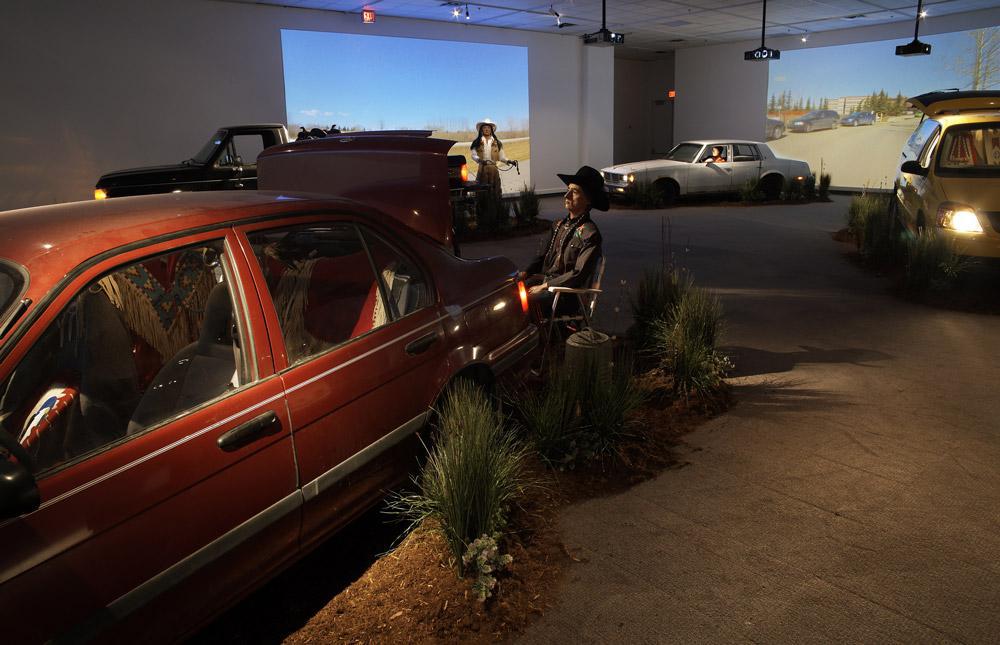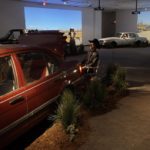For many years, Calgary’s Glenbow Museum has struggled with just this question. Each of the above is an object found in the Glenbow’s million-item inventory—a collection that ranges from geology and community history to world cultures and First Nations artifacts.
On Thursday, however, the Glenbow announced a new unifying theme for its approach—namely, art. For the foreseeable future, it is aiming to position itself as a “new kind of art museum,” and it is touting its 33,000-piece art collection (the largest west of Toronto) as a key part of that approach.
“We saw aspects of art in all of our collections” during a year-long visioning process, Glenbow president and CEO Donna Livingstone tells Canadian Art. “If we start looking at [objects in history and mineralogy and First Nations collections] through the lens of art—or the art of making—then all of a sudden some really interesting connections come up.”
The Glenbow’s decision to focus on art has been welcomed by Terry Rock, interim managing director of Contemporary Calgary and former president and CEO at Calgary Arts Development, where he helped lead conversations last year about the future of Calgary’s art scene.
“It was pretty clear [a year ago] that the city’s players in the visual arts needed the Glenbow to declare its direction, because it is the big player,” says Rock. In November 2012, former Glenbow president and CEO Kirsten Evenden resigned amid news of $1 million deficits. And in 2013, Calgary’s art stakeholders told Rock that they wanted “a strong sense of direction” from the Glenbow to “clear up some uncertainty” about its mandate.
Now that clarity is available, Rock says, “everyone else can figure out how they fit in or complement that,” as well as “focus on building audiences for visual arts in Calgary together.”
Indeed, building audiences was also part of the Glenbow decision to focus on art.
“We did an audience engagement survey last year, and it told us that 80 per cent of our public visitors were coming for our changing art exhibits,” Livingstone says. “We’ve been seeing a younger, probably more diverse and well-travelled, educated audience…. They’ve seen this kind of experience in other cities and they expect and want to see it in their own city.”
Though future Glenbow attendance targets aren’t yet available, a quick look at other Western Canadian museums suggests that art can get more people through the turnstiles. While the Glenbow’s total attendance was 117,681 in 2012–2013, the Art Gallery of Alberta’s was 123,000 and the Winnipeg Art Gallery’s was 155,000—with the AGA and WAG both located in smaller cities.
The Glenbow’s existing art collection includes more than 100 paintings and sketches by the Group of Seven; one of the largest collections in the world relating to Modernist printmaker Sybil Andrews; and the entire New York and Banff studio contents of American wildlife painter Carl Rungius (the hiking boots mentioned in the introduction of this article are his).
“I think the beauty of our collection… is that we can talk about not just contemporary art, and not just historical art, but the art of making things,” Livingstone says.
Livingstone also says the Glenbow’s decision to focus on art is due to increasing momentum in the Calgary art community. In 2012, the privately funded Esker Foundation opened in the city’s Inglewood neighbourhood, while in October 2013, Toronto dealer Barbara Edwards opened a Calgary outpost in the Beltline. In December 2013, three Calgary art organizations—the Art Gallery of Calgary, MOCA Calgary and IMCA Calgary—amalgamated into Contemporary Calgary.
Accordingly, collaboration is also part of the Glenbow’s vision. This weekend, it opened “Made in Calgary: The 1990s” in collaboration with Contemporary Calgary.
“We’re also partnering with the Esker Foundation, the Nickle Galleries [at the University of Calgary] and the Illingworth Kerr Gallery at the Alberta College of Art and Design in hosting the ‘Oh, Canada’ exhibition next year,” Livingstone says.
Also part of the new direction are a refreshed logo and website; a new entrance on 8th Avenue, Calgary’s pedestrian walkway; and a refresh of the galleries through 2016, which marks the 50th anniversary of the gallery. Some Glenbow historical exhibits haven’t changed for a decade or more, and their spaces are also due for a rehang.
When asked what late Glenbow founder Eric Harvie—a petroleum entrepreneur and lawyer who supported institutions celebrating Western Canadian history and culture—might have had to say about the museum’s shift away from history and towards art, Livingstone said that recent Glenbow projects by Kent Monkman and Corb Lund suggest a way that contemporary artists might address the West’s histories with new eyes.
“Eric Harvie was a businessman, and he would recognize that the Calgary of 50 years ago, when we opened, has changed quite a lot,” Livingstone says. “As much as we are interested in the Old West, we really want to update [the Glenbow] with how people are looking at the West today.”

 Kent Monkman's The Big Four—a contemporary artist's reflection on the legacy of the Calgary Stampede shown at the Glenbow this past year—is an example of its new direction, president and CEO Donna Livingstone says.
Kent Monkman's The Big Four—a contemporary artist's reflection on the legacy of the Calgary Stampede shown at the Glenbow this past year—is an example of its new direction, president and CEO Donna Livingstone says.








